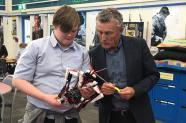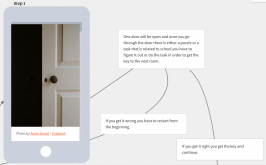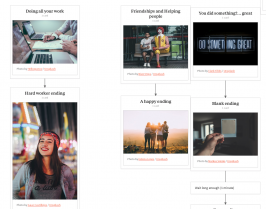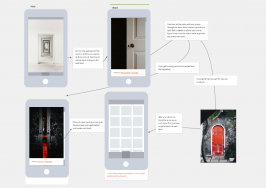Digital technologies curriculum content and designing games
Digital game concepts
Greymouth High School year 10 students created digital game concepts.
The programme of learning brought together knowledge from the three technology strands and included learning in computational thinking and designing and developing digital outcomes.
An authentic and feasible game context
Making game design achievable at year 10
Creating games is an engaging context for students. Focusing on one aspect of game design – creating the concept – shortened the project length. The programme of learning at Greymouth High School was completed in two terms.
An authentic, local curriculum context for digital game design
The students' brief was to create a concept for a game to:
- go on the new school website
- fit with the school’s vision
- help other students understand and look after their hauora (health and wellbeing).
Hauora is one of the school’s values. Greymouth High School has a strong focus on mātauranga Māori and te ao Māori (knowledge, worldview).
To begin to understand creating a game concept that focused on hauora, the students analysed Oat the goat. This is a Ministry of Education interactive, online story. It helps children and parents discuss bullying and being kind.
The students looked at Never Alone - Kisima Ingitchuna. This is a puzzle-platform game developed in collaboration with the Iñupiat, an Alaskan Native people. In puzzle-platform games the player has to climb and jump between platforms with puzzle solving. The game explores the traditional lore and values of the Iñupiat people.
What contributed to success here?
Digital game design and development is a complex task. The advantages of designing a game concept are:
- students can complete the unit within a short time frame
- it reduces barriers of student skill level on technology platforms
- time can be spent understanding concepts and ideas that underpin game designers' (technologists') practice and technology rather than focusing solely on the outcome.
The game types analysed and the context provided drew upon the richness of cultures, health, and wellbeing rather than violence.
Designing a game concept let students be creative and come up with different outcomes. The authentic context within values of the school shows local curriculum in action. See the local curriculum guide series for more information.
Questions to consider
- What authentic context will work for your students?
- What examples of games will you use to help students think about game concepts differently to what they have experienced outside of school?
- How will you engage students who have a predetermined mindset towards game concepts?
Learning game developer practice
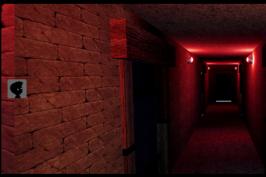
Corridor GIF created in W3 schools
Platforms and programming languages investigated
Teacher Aleta found students familiar with good gaming platform qualities from their own gaming experience. Students knew to select a game platform that let the game be played across multiple devices and without lag.
Students had access to the gaming platform Unity. Unity is helpful because it offers projects with tutorials and videos to help students build their skills in using the platform.
W3 schools helped students develop their HTML and JavaScript skills. HTML is a standardised language for creating webpages. JavaScript is a computer programming language used to develop interactive content for websites. W3 schools tutorials include experimentation that the students found useful. For example, one student learnt through a W3 schools tutorial how to add a GIF (animated) background to his game to make it engaging.
Building game development skills
The students each built two simple practice games to develop their skills.
They were given the choice of different projects:
- use HTML and develop a platform game using W3 schools
- use Unity to develop a 2D or 3D game
- use Minecraft to develop a roller coaster project or an innovative school
- build and program Lego Mindstorm EV3 and incorporate it into a game scenario
- develop music and an interactive LED display for a game using JavaScript and micro:bit block based programming.
What contributed to success here?
Building practice games helped the students to understand game mechanics and design. It improved their skills on the platforms and with programming languages.
The students were encouraged to consider the progress of their learning in computational thinking using progress outcomes 4 and 5 and in designing and developing digital outcomes using progress outcomes 2 and 3.
Students considered human-computer interaction (HCI) and usability heuristics – broad guidelines for creating a digital outcome that is easy to use. The students are beginning to understand how computers store images and complex data using binary digits.
Questions to consider
- How will you extend the students’ computational thinking skills to cover progress outcomes 4 or 5, while keeping a practice game task manageable in the time frame available?
- Designing and developing digital outcomes progress outcome 2 says “students can select from an increasing range of applications and file types to develop outcomes for particular purposes”. How will the students demonstrate this through their practice games?
Functional modelling for a digital outcome
Applications to model outcomes
The students were introduced to a range of applications for recording learning and displaying the development of their digital outcome. Students began using the Google classroom suite and then progressed to other applications.
Storyboarding
Storyboarding is sketching out ideas for characters and scenes.
The students worked in teams to draft a simple story for their proposed game. They used examples of existing storyboards to help them with their own on Storybird and Milanote. Storybird and Milanote are applications for creating visual stories. The students designed characters and character challenges. They placed scenes in order and collected imagery that included photographs of parts of the school or classroom.
The students had to consider multiple aspects when developing their game story including:
- physical environment for the game
- characters
- artistic depiction of characters and the environment
- game mechanics including the challenges, their associated tasks, and supports
- programming
- user interface.
The students used the storyboard to break down the tasks into actions carried out by the player. The students learnt to step into the shoes of the player and view the game from their perspective with the purpose of the game in mind.
It was fascinating to see them take on personas of their game characters, even though they had only interacted with first person controllers (characters) on Unity.
Aleta Chowfin, digital technologies teacher
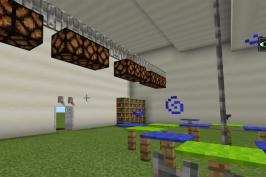
Minecraft modelling of concepts
Minecraft can be used to create or re-create other games or circumstances that have goals, rules, and user interaction.
Some students used Minecraft to create functional models of their game mechanic ideas.
What contributed to success here?
Aleta says through exposing students to a range of applications, with self-explanatory tutorials, they discerned what worked for a particular task to help model their outcomes. This is part of designing and developing digital outcomes progress outcomes 2 and 3.
Students worked collaboratively to develop the brief for the concepts of their game.
They planned together to develop the concepts within the semester time frame and using the resources available. They used the iterative agile model to design and test their game concepts.
The students looked at how game developers would undertake planning, the selection of resources, and how they would make and test an outcome. The students identified the technological knowledge that game developers use to ensure successful outcomes. This has a direct link to the characteristics of technology component within the nature of technology strand at curriculum level 3.
The students gained technological knowledge about technological modelling. They learnt how game developers carry out functional modelling to display their conceptual ideas.
Functional modelling is the ongoing testing of design concepts. Functional models play a crucial role in identifying an outcome’s potential before it is fully realised as a technological outcome.
Questions to consider
- What will help students focus on the concepts of technological practice while also creating a digital outcome?
- How will students understand technological modelling through designing and developing digital outcomes?
- What will help students choose the appropriate modelling for their digital outcome?
- What can students learn about functional modelling from researching how different game developers model and test an outcome?
- What is the difference between functional modelling and prototyping?
Explore technological modelling in the technological knowledge strand
Watch this short video to learn more about technological modelling.
Technological modelling
Outcomes and future ideas
Game designs
The teams came up with creative ideas to meet the game concept brief.
One team’s game was based in a white room with multiple doors. The doors required keys, obtained by solving a puzzle or doing a task. The puzzles and tasks were based on Greymouth High School wellbeing information.
Another team’s concept involved Greymouth High School being captured by an oceanic race. The player had to escape before the school was destroyed by the water pressure. Escape involved completing missions and collecting items. A player’s decision to be good, bad, or average when completing a mission dictated the ending reached.
Another team’s idea involved the player as a school student entering a classroom and needing a code to unlock doors. The player finds clues to complete the code by performing tasks for the teacher.
Future ideas
In the future Aleta aims to increase the sophistication of the students’ game concepts. She plans for students to consider 3D printing some of the spaces in their game design. She is exploring the use of Google Tilt Brush. This tool allows designers to paint in a 3D space with virtual reality.
What contributed to success here?
Key competencies, including relating to others, managing self, and participating and contributing, align with skills large IT employers now consider most important. See The seven top skills Google now looks for in graduates.
Technology teacher Aleta likes to align with this thinking when developing student programmes. Some of the strategies used in this year 10 programme to develop key competencies included:
- students working collaboratively on game design in teams
- requiring the game to assist students to look after their hauora (wellbeing) so students needed to think about the values and cultures of others
- presenting their conceptual game ideas to parents, senior leadership, and the Greymouth mayor.
Question to consider
- What key competencies will you focus on in your technology programme of learning?
Find out more about the key competencies and technology.
Summary
The students were given an authentic context to design and develop a digital outcome for a game concept. The outcome of a concept rather than a completed game meant the task was achievable within the time frame and with the resources available. The students could focus on learning concepts from the technology learning area rather than a successful working game.
Through making two practice games the students developed their computational thinking skills and knowledge in designing and developing digital outcomes.
The students thought about the characteristics of technology, a component in the nature of technology strand as they researched game developers' practice.
Creating a game concept helped the students understand technological practice and the usefulness of technological modelling, a component of the technological knowledge strand.
Working collaboratively in groups helped with the key competencies of relating to others, managing self, and participating and contributing. These competencies align with skills wanted by large IT employers.
You might also like ...
Getting started with years 9 and 10 digital technologies programmes
Watch this webinar about designing programmes of learning to align with the digital technologies progress outcomes and learning progressions.
Technology in the news on gaming
Read news articles about digital games with discussion starters from the technology learning area.

